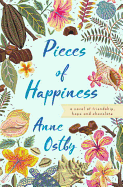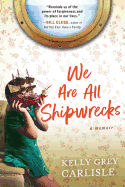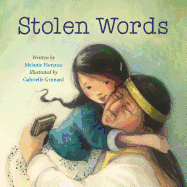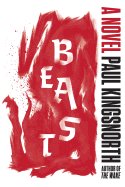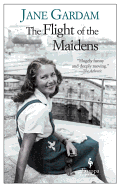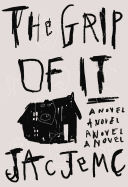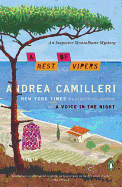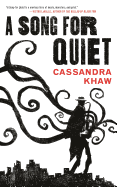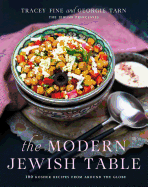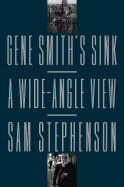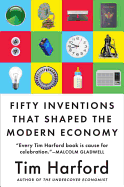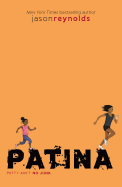Tuesday, September 5, 2017
It's never too late to celebrate Labor Day. I often read about work during my time off, which may seem counterintuitive, but work is... complicated. Consider Philip Levine's poem "What Work Is." Here are a few of my recent favorites.
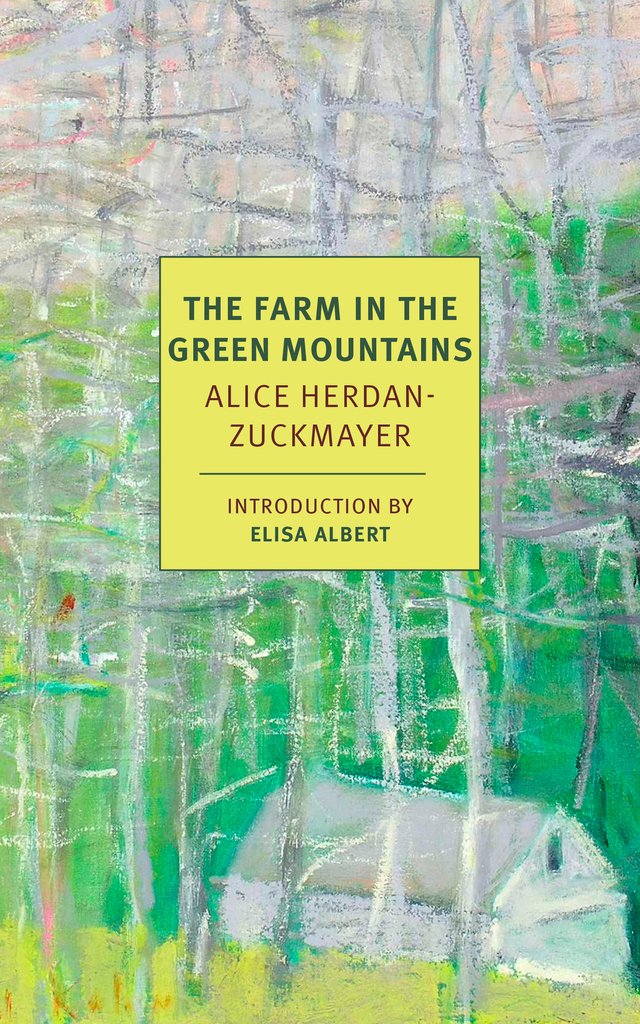 In the NYRB Classics edition of The Farm in the Green Mountains, Alice Herdan-Zuckmayer chronicles a critical period in her life when she and her husband, playwright Carl Zuckmayer, fled Berlin and the Nazis. They eventually landed in Vermont for a few years of unaccustomed hardscrabble farming. I love her chapters on finding refuge in the Dartmouth College Library: "Here is then the library, my rock, my refuge, my cloister. When I sit in my cell, no goat bleets, no chicken cackles, no pig grunts, no duck quacks, no goose honks, no rooster crows."
In the NYRB Classics edition of The Farm in the Green Mountains, Alice Herdan-Zuckmayer chronicles a critical period in her life when she and her husband, playwright Carl Zuckmayer, fled Berlin and the Nazis. They eventually landed in Vermont for a few years of unaccustomed hardscrabble farming. I love her chapters on finding refuge in the Dartmouth College Library: "Here is then the library, my rock, my refuge, my cloister. When I sit in my cell, no goat bleets, no chicken cackles, no pig grunts, no duck quacks, no goose honks, no rooster crows."
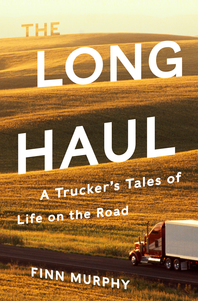 Finn Murphy is a hard worker and great storyteller. The Long Haul: A Trucker's Tales of Life on the Road meshes those qualities seamlessly. "Since most of my job satisfaction comes from the work," he writes, "I don't get too indignant whether I'm treated like a galley slave, a potential threat, an uncomfortable example of the dark side of the labor pool, or a helpmeet and partner. I try to keep things smooth and easygoing."
Finn Murphy is a hard worker and great storyteller. The Long Haul: A Trucker's Tales of Life on the Road meshes those qualities seamlessly. "Since most of my job satisfaction comes from the work," he writes, "I don't get too indignant whether I'm treated like a galley slave, a potential threat, an uncomfortable example of the dark side of the labor pool, or a helpmeet and partner. I try to keep things smooth and easygoing."
A couple of years ago, I was recommending Boss Life: Surviving My Own Small Business by Paul Downs, which offers a fiercely honest behind-the-scenes look at the professional and personal life of an independent furniture designer and manufacturer.
My TBR-soon list includes Danger: Man Working: Writing from the Heart, the Gut and the Poison Ivy Patch by Michael Perry, who has long been one of my favorite writers on work. His advice for aspiring writers "is predicated on formative years spent cleaning my father's calf pens: just keep shoveling until you've got a pile so big, someone has to notice." That's as good a way as any to end a Labor Day piece. --Robert Gray, contributing editor
Pieces of Happiness
by Anne Ostby
In a novel as stunning as the island her characters inhabit, Anne Ostby tells the story of five sexagenarian women who take a leap of faith and move to Fiji to start a chocolate business. The women, friends since childhood, found vastly different paths through life after graduation. Ingrid studied accounting and spent her adult life keeping the County Bus Service books. Sina, single with a baby right out of high school, worked hard to raise and support her son. Now at almost 50, he's still sponging off of his mother, relying on her guilt in order to take what little money she has. Lisbeth, the most physically attractive, married her high school sweetheart. As her beauty waned, so did her husband's interest. Maya became a schoolteacher, but dementia is taking hold of her now. And Kat, the grand adventurer, left Norway to travel the world with her husband. Following his unexpected death, Kat invited her friends to join her in Fiji. They each arrive with cautious hope and buried secrets.
Pieces of Happiness bursts with the delicious flavors of friendship, self-respect and risk. Ostby's wonderfully flawed characters remind readers that there's plenty of life after gray hair, laughter is life affirming and a good friend is priceless. She crafts a Pacific island atmosphere so authentic, the salty sea air and dark chocolate aroma seem to envelop every page. The charming magic Ostby infuses into her Fijian cocoa farm and the women who run it makes Pieces of Happiness a joy to behold. --Jen Forbus, freelancer
Discover: Five women take a chance on friendship and chocolate being the recipe for happiness after 60.
Beast
by Paul Kingsnorth
Beast is the second in Paul Kingsnorth's planned trilogy. The first, The Wake, was post-apocalyptic fiction set a thousand years ago and written in an invented language. Beast shares its main character, but feels more like McCarthy's The Road, its language spare and intense. In these novels, Kingsnorth searches beyond current civilization to ask how we might live instead. He doesn't have answers, and his anguish is haunting.
Beast follows Edward Buckmaster, a man compelled to escape the literal and spiritual noise of the city. He's left his family to live on the vast English moor, "far from the estates and the ring roads and the car parks and the black fields of beet and the screen-dumb people pacing out the slow suicide of the West."
Buckmaster finds a derelict barn; he fixes it up. He suffers an injury; he heals. He visits an empty church. He wanders in the heather. He senses some undefined beast tracking him and begins to hunt it instead. In his isolation and increasing obsession, Buckmaster's mental state deteriorates. He becomes more animal.
Fair warning: Beast is challenging, as many books about hermits can be. Little happens, the structure is bare and there's minimal punctuation to buttress reading. It reckons with God and humanity, and is designed to be read millennia from now. That might be arrogant if the author presumed to offer answers, but the novel is written primarily in a questioning register. Beast may very well succeed at surviving. --Zak Nelson, writer and bookseller
Discover: Paul Kingsnorth continues his trilogy with a searching novel about a modern-day ascetic, set in the English moorlands.
The Flight of the Maidens
by Jane Gardam
The Flight of the Maidens opens as three girls, eager to leave their English village, celebrate the arrival of their scholarship notices: "Una was off to Cambridge to read Physics and Hetty off to London to read Literature, and Liesolette, who had joined their sisterhood really seriously only today... was off to Cambridge, too, to read Modern Languages." The girls are poor. It is 1946; rationing is still in effect. Physical and emotional vestiges of two world wars are all about them.
Neverthless, the girls' vigor during their summer before school infuses Jane Gardam's (A Long Way from Verona) 24th book with optimism. Even enigmatic Liesolette, who arrived at her foster home in 1939 via the Kindertransport from Hamburg in Nazi Germany, is enthusiastic. Each chapter features one of the girls, their stories progressing independently amid townsfolk gossip. Hetty is on a solo holiday to the Lake region with a rucksack of books and a deep desire to escape her overbearing mother, while Una is focused on a bike trip with another longtime friend, a working man. A Jewish rehabilitation group whisks Liesolette to London, where her resilience sustains her as agencies seek any surviving relatives. Minor characters are richly portrayed. Hetty's father, the kind, "loopy" gravedigger whose World War I battles put him "always at the Somme"; Una's widowed mother, a jolly, self-taught hairdresser; the rich great-aunt who flies Liesolette to California to be her caregiver--any of them could carry novels of their own. Often hilarious, The Flight of the Maidens, originally published in 2001, is a well-crafted coming-of-age novel. --Cheryl Krocker McKeon, manager, Book Passage, San Francisco
Discover: Three friends in post-World War II England celebrate their summer before leaving for university.
The Grip of It
by Jac Jemc
When Julie and James Khoury's marriage nearly ends because of his gambling addiction, they decide to make a fresh start by moving to a new town. They purchase a large Victorian home idyllically situated between a forest and lake. Even more attractive is its low price, thanks to being on the market for some time.
At first, the young couple dismisses the odd sound that permeates the house's interior as something electrical, an easily fixed nuisance, but soon the strange noise intensifies. "It's like a mouth harp. Deep twang. Like throat singing. Ancient. Glottal. Resonant. Husky and rasping, but underwater." More bizarre incidents follow: Julie develops ghastly bruises, stains appear on the walls, objects disappear and vultures gather in the backyard, where mysterious phantasmal children climb trees. Julie and James seek information about the previous owners from their eccentric, reclusive neighbor Rolf Kinsler, whose tragic past may be connected to their terrifying present.
Jac Jemc (A Different Bed Every Time) has crafted a dark psychological thriller that effectively uses the destruction within a couple's new home as a funhouse mirror to reflect the emotional disintegration that occurs after trust and honesty collapse. "The inability to trust ourselves is the most menacing danger. I fear what we could find there. I fear what we won't. What is worse? To be confronted with an obvious horror, or to be haunted by a never-ending premonition of what's ahead?" In short chapters alternating between Julie's and James's narratives, The Grip of It asks whether it is possible fully to excavate emotional demons with a tight grasp on the souls. --Melissa Firman, writer, editor and blogger at melissafirman.com.
Discover: A new house terrorizes a young couple as they struggle to rebuild their marriage.
Mystery & Thriller
A Nest of Vipers
by Andrea Camilleri, transl. by Stephen Sartarelli
Andrea Camilleri (The Brewer of Preston) continues his evocative Inspector Montalbano mystery series with A Nest of Vipers, the 21st entry. The bright covers and Camilleri's descriptions of beautiful scenery and delicious Sicilian food contrast sharply with the underlying corruption and crime that Montalbano must fight at every turn.
As A Nest of Vipers begins, Montalbano makes the unlikely acquaintance of a homeless man who lives in a cave, before being abruptly called to the scene of a murder. Cosimo Barletti, an accountant, was found dead at his breakfast table. As Montalbano and his team investigate Barletti's life, they discover that he was essentially a loan shark, charging his clients usurious rates of interest. Furthermore, he blackmailed several young women into having sex with him.
The more they dig into Barletti's past, the more people they find who would have been willing to shoot him, and Montalbano cannot help but contrast Barletti's scheming existence with the simple life of the cave-dwelling man.
Sad, fascinating and occasionally funny, A Nest of Vipers is an interesting glimpse into quotidian life in Sicily, and into the nasty underside of apparently respectable people's lives. Anyone who loves a good mystery set in a faraway locale is sure to enjoy this Camilleri mystery, which can easily be read out of context, if readers are short on time. Afterward, though, they may want to catch up on the first 20 entries. --Jessica Howard, bookseller at Bookmans
Discover: Inspector Montalbano must solve the murder of a loan shark in this Sicilian mystery.
Science Fiction & Fantasy
A Song for Quiet
by Cassandra Khaw
"The train rattles like teeth in a dead man's skull as Deacon James sags against the window, hat pulled low over his eyes," writes Cassandra Khaw in her eerie horror novella, A Song for Quiet. Set in the 1940s, when racism and Jim Crow laws were rampant in the Deep South, the second in the Persons Non Grata series features Deacon James, a black man who plays the blues on his saxophone like no one's ever heard before. As he passes from known tunes into the world of improv, the music he plays morphs into a foreign entity in his brain that threatens to consume him if he gives it full reign. Others also want what he carries inside his head, including the crazy John Persons, who seems to appear and disappear like magic. When Deacon meets a young wisp of a girl who can play haunting improvisations on the cello, the action ramps up as the pair struggles to cope with the nightmares that surround them.
Khaw has carefully and poetically blended the notations often used to describe music with a twisted and horrific world of hallucinations, violence, grief and "gaping mouths and grasping tendrils." The story is subtle and open-ended, leaving readers to ponder what is really after Deacon and the girl, and why Persons wants what they have so desperately. It's a quick, unsettling read that reverberates inside the head, a musical riff sure to appeal to those who love noir horror. --Lee E. Cart, freelance writer and book reviewer
Discover: A bluesman speaks to the horrors around him through his saxophone.
Food & Wine
The Modern Jewish Table: 100 Kosher Recipes from Around the Globe
by Tracey Fine and Georgie Tarn
Tracey Fine and Georgie Tarn, the self-styled "Jewish Princesses" of kosher cooking, offer up a collection of recipes and advice in The Modern Jewish Table: 100 Kosher Recipes from Around the Globe.
The Princesses design modern spins on traditional Sephardic, Ashkenazi and Mizrahi dishes, such as Jewshi Japanese Gefilte Fish, Sephardi Saffron Chicken Soup with Fragrant Matzo Balls, and Princess Pitas, made with mashed potato and matzo, an ideal choice for Passover. The authors also get creative with salads like Sharon Persimmon Fruit and Sugar Snap Peas. Up last come four (four!) dessert chapters, including a chapter each on dairy-free desserts, cakes, tiny treats and couture chocolate.
The descriptions convey a sense of the dishes' taste and a sense of humor. Fine and Tarn vow that their Mock Chopped Liver, "really works, unlike fake Hermes handbags." They suggest readers try the Popcorn Cake "for when you want to butter someone up," or enjoy Dark Chocolate Amaretto Cake that is "like a date with Al Pacino."
Essays precede each section, full of meditations on feeding families and the magic of Nutri-Bullets. Fine and Tarn pepper in translations for readers who might not get a joke, such as explaining that kneidlach, which they call "Jewish penicillin," are dumplings. Cooking instructions are streamlined--sparse, even--and luscious photos accompany most recipes.
Fine and Tarn write with warmth and encouragement, even when suggesting bold feast preparations. The essential ingredient? In their words, "A pinch of chutzpah." --Katie Weed, freelance writer and reviewer
Discover: Cooks of all skill levels and faiths will find colorful, delicious and kosher recipes both modern and traditional in this collection.
Biography & Memoir
We Are All Shipwrecks: A Memoir
by Kelly Grey Carlisle
A young mother tucked her three-week-old daughter into a drawer in a Hollywood motel room before leaving for the night. A police detective would lift the baby out again, after the mother was murdered. In the opening scene of Kelly Grey Carlisle's memoir, We Are All Shipwrecks, an eight-year-old Kelly meets that detective for the first time, having just learned how her mother died. It sounds like a sensational beginning, but Carlisle's measured, wondering tone allows the reader, like the author's child self, to meet each disorienting new situation with curiosity rather than a sense of spectacle.
Kelly was raised by her maternal grandfather and his much-younger wife, whom she calls Daddy and Mommy. They own a pornography shop near the Los Angeles airport, and for many of Kelly's formative years, they live on a boat in a marina. Their neighbors are unglamorous down-and-outs, and Kelly is wracked by how normal her childhood isn't. But in her reflections on the page, she realizes that the adults who surrounded her in her youth played various parts in her unconventional upbringing; many of them were loving, positive figures. As she matures and learns more about her grandfather and Marilyn--the nearest to parents that she'll ever know--Kelly persists in wondering about the mother she lost.
We Are All Shipwrecks is a personal history, a commentary on the experiences of childhood (uncertainty, pain, possible acceptance) and an investigation into what creates us. Readers who appreciate thoughtful memoirs will be charmed by Carlisle's generosity and easy, open reflections. --Julia Jenkins, librarian and blogger at pagesofjulia
Discover: An unstable childhood on the harbor in Los Angeles yields a wise, contemplative, forgiving memoir by a likable narrator.
Gene Smith's Sink: A Wide-Angle View
by Sam Stephenson
Eugene Smith was a larger-than-life figure of 20th-century photography, but biographer Sam Stephenson uncovers the small intricacies of Smith's life in his compelling portrait, Gene Smith's Sink: A Wide-Angle View.
Stephenson approaches his subject by interviewing Smith's friends and associates--including famous figures like Thelonious Monk who hung out in "the isolated squalor" of Smith's New York loft--and by poring over Smith's letters and own writings. Stephenson includes Smith's pawnshop receipts, court summons and other sundry documents, developing a picture of an itinerant life and lending the biography an aesthetic of marginalia that serves its subject well. By using this "wide-angle view," Stephenson explains, he can get "a clearer picture of Smith by averting my focus slightly to the side of him, the way you can see stars in the sky clearer by doing the same thing."
What emerges is a portrait of Smith not so much in his prime--when he was taking iconic portraits for Life magazine midcentury--but in his later work, when his alcohol abuse, obsessive behavior and reclusive lifestyle led to more complex photography and a number of ambient sound recordings that demonstrated his pervasive need to capture his surroundings. "Not many people are truly able to understand beauty and pain and ugliness," says Smith's former assistant Tamas Janda. "Most people don't want to be reminded of their humanity, which is inherently painful and ugly. Gene sought that out."
In opening his aperture for this biography, Stephenson gives shape to the vagaries and fleeting enchantments of human life, which photography tries to hold still. Gene Smith's Sink is a haunting exploration of the photographic mind. --Scott Neuffer, writer, poet, editor of trampset
Discover: This eclectically sourced biography illuminates the life and mind of famed 20th-century photographer Eugene Smith.
Business & Economics
Fifty Inventions That Shaped the Modern Economy
by Tim Harford
Often tagged by the name of his Financial Times column (and title of his first book), "The Undercover Economist," Tim Harford has built a reputation as someone who can turn marginal utility curves into common sense. In Fifty Inventions That Shaped the Modern Economy, he writes clever, quixotic essays exhibiting his take on the singular innovations that seeded the contemporary way of life. These are pithy vignettes about objects people may take for granted now, but which were hardly obvious when somebody dreamed them up. Based on history, biography and a splash of economics, Harford's fresh look is great entertainment, with enough ah-ha wisdom to evoke a "listen to this," reading aloud of a favorite passage.
While he includes the usual heavy-hitters like barbed wire, air-conditioning, the elevator, the clock and the computer, he also throws in several of his own unexpected quirky favorites. Who would have highlighted the TV dinner, the Ikea Billy bookcase, the passport, the Pill or mundane business tools like insurance, index funds and management consulting? But he has his reasons. The Billy, for example, is included not so much for its design as for IKEA's mass production and packaging techniques. Each day in southern Sweden, "in goes particleboard by the truckload... out come ready-boxed products, stacked six by three on pallets"--adding up to a cumulative total of 60 million shelving units. That's a lot of head-scratching DIY assembly across the globe--and homes for a lot of books. Put this one among them. --Bruce Jacobs, founding partner, Watermark Books & Cafe, Wichita, Kan.
Discover: Popular economist Tim Harford's book about inventions is a personal, funny and quixotic portmanteau of innovations upon which the modern world rests.
Children's & Young Adult
Stolen Words
by Melanie Florence, illus. by Gabrielle Grimard
Skipping and dancing home from school, a young girl carries in one hand a dream catcher she's made, and with the other she holds onto her Grandpa. "How do you say grandfather in Cree?" she asks. And suddenly their walk turns somber as Grandpa admits, "I don't remember... I lost my words a long time ago."
Bewildered, the little girl presses, "How do you lose words, Grandpa?" He tenderly explains about the residential schools to which First Nations children were forcibly sent, meant to "assimilate" them and erase their identity: "They took our words and locked them away, punished us until we forgot them, until we sounded like them."
By the next day, the little girl has a plan: "My teacher helped me find this for you at the library," she says, presenting her grandfather with a "tattered well-worn paperback"--a dictionary--in which he finds the soft, familiar words of his past. Together, grandfather (nimosôm) and granddaughter (nôsisim) will reclaim their Stolen Words.
Melanie Florence, of Cree/Scottish descent, won Second Story Press's 2015 Indigenous Writing Contest with Stolen Words, a sobering ode to her heritage, presented through eyes filled with love and hope. Artist Gabrielle Grimard (who previously illustrated Margaret Pokiak-Fenton's two-part residential school memoirs, When I Was Eight and Not My Girl) is Florence's ideal creative partner, enhancing each page with depth and movement, capturing every touch, every gaze with enveloping empathy. Adding a grey overwash on Grandpa's memories proves especially effective in emphasizing the traumas he survived.
Although an afterword with historical context and suggested further reading feels missing here, Florence's narrative couldn't be more affecting. Word by word, her story--written in honor of her Cree grandfather--is a significant step toward forever healing. --Terry Hong, Smithsonian BookDragon
Discover: A young girl helps her grandfather remember words from his Cree language that he thought were lost forever.
Patina
by Jason Reynolds
Patina and Maddy's father died six years ago. Maddy, "all fidgety in Ma's stomach" at the time of his death, never knew him. And she doesn't remember how their Ma's diabetes made her lose first a few toes, then a whole foot and finally both legs. But middle school-aged Patina remembers it all: how her dad "never woke up. Like... ever."; how Ma's legs got "swollen and dark like she'd been standing in coal" before they were amputated. Now living with their father's brother, Uncle Tony, and his white wife, Mama Emily (whom the girls call Momly), Patty has "swallowed it all" and learned to act like she's okay.
Living with Uncle Tony and Momly is "fine" and Ma sees the girls every chance she gets, but Patina has never really been given the chance to mourn the loss of her father, the almost loss of her mother. And now she's trying to make a place for herself on the track team of her brand-new school, a place with "a whole bunch of rich girls whose daddies own stuff." She's defensive and angry but mainly afraid--afraid to be herself, afraid she's not good enough, afraid she'll lose someone else.
Patina, Jason Reynolds's second book in his Track series, has the titular character interacting with and befriending the cast of characters from Ghost while maintaining a stand-alone story. It is simply impossible to not love Patina. She is, as she states of herself, "No junk. Frida [Kahlo] in a suit. Mary J. Blige in track shoes." Charming, hardworking and a dedicated sister, runner and student, Patina is a sympathetic and wholly sympathetic character who finds her own peace by learning to work with others. --Siân Gaetano, children's and YA editor, Shelf Awareness
Discover: Jason Reynolds's second book in the Track series features an independent young woman whose old scars begin to heal as she learns to work with a team.
| Advertisement Meet belle bear! |


